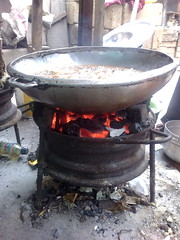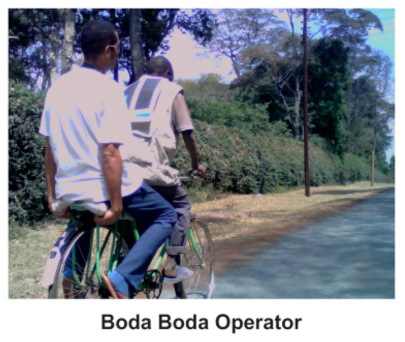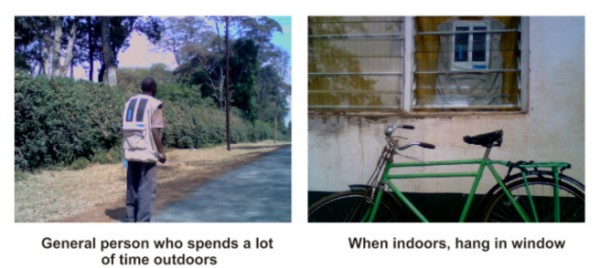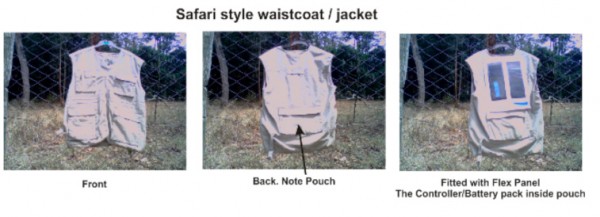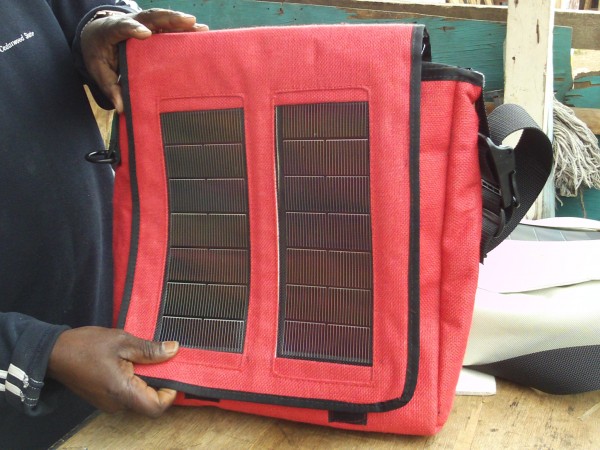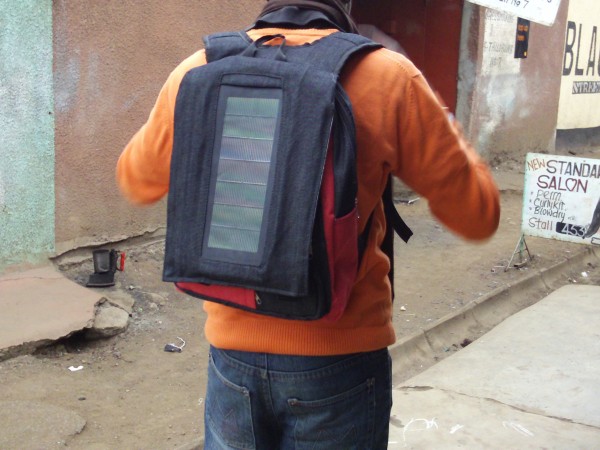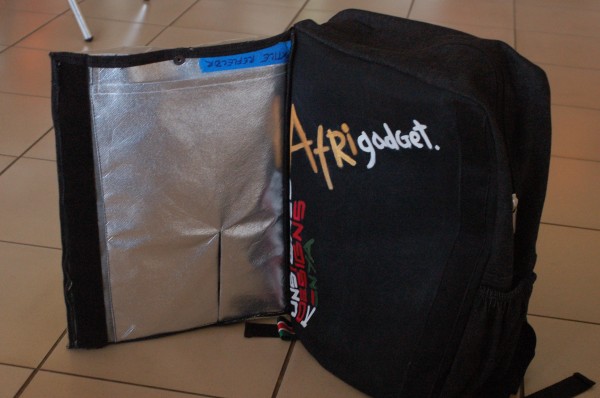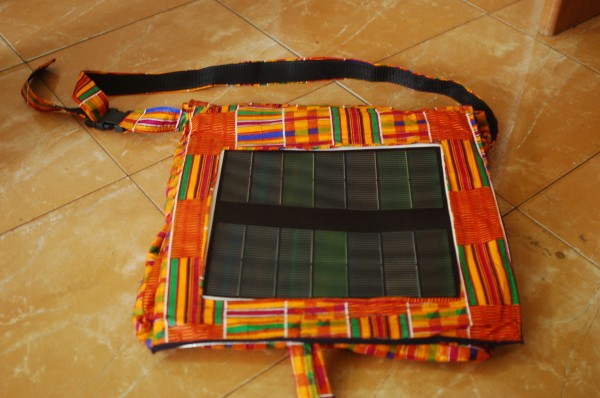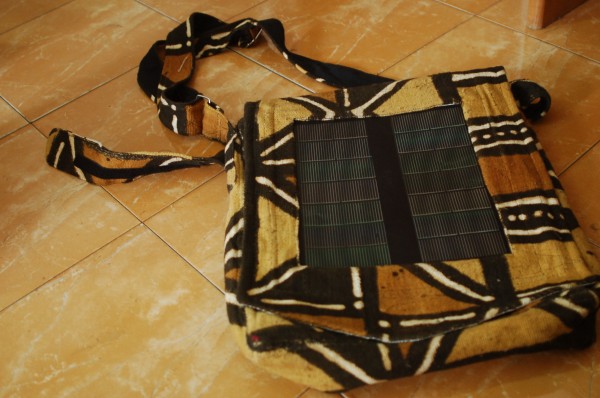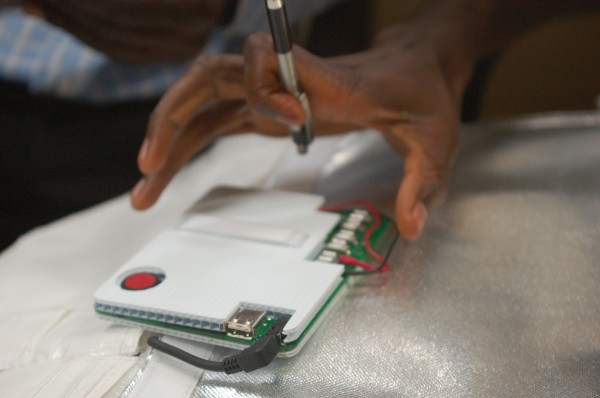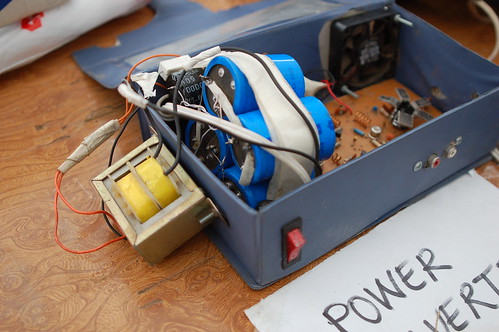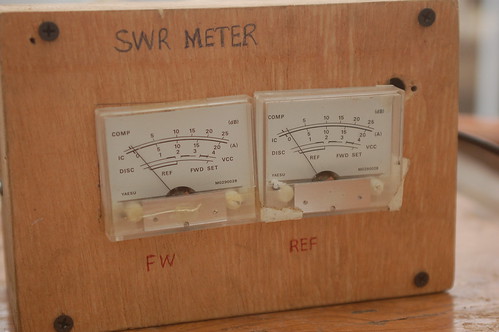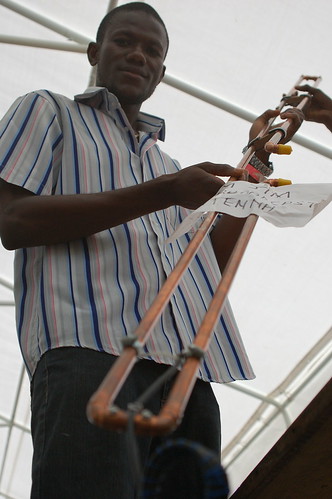I love street food. Everywhere I go, from street markets in Russia, to back alleys of Beijing to side streets in Skopje, to the boulevards of Bamako, I make it a point to eat as many meals from roadside stands as possible. Ghana and Nigeria are no exception. In fact, I love me a MamaPut.
Its only where Mama herself is there to put more of her good eats on your plate, that I really feel I’m getting a good meal. Why? Because I can see ever step of its preparation, talk with the chief personally, and share the transcending bond of food with my fellow man and woman.
Now I wouldn’t call myself a street food expert – I’m not discerning enough for that title, but I am observant in the different styles of edibles vendors. In West Africa, I’m particularly impressed by the stock street food cooking apparatus. Simple, cheap, and recycled, I present to you the “Rim Stove”.
Using the steel rim off a car wheel as the basic starting point, three metal legs are wielded to the outside of the rim. Inside, a metal grate is added to the bottom to hold in the coals, and some form of pan or kettle stand is wielded to the top.
I’ve seen several variations on this theme, but the basics are always the same – the Rim Stove burns charcoal that’s been ignited in the middle of the rim, fed by air from the bottom and heating a cooking container sitting either on the pot stand or the coals themselves.
During on extending brainstorming session, I even tried to think of improvements to the Rim Stove – how it might burn hotter with less customization. My only solution? Make sure a Rim Stove is cooking chips for your fresh grilled fish.


